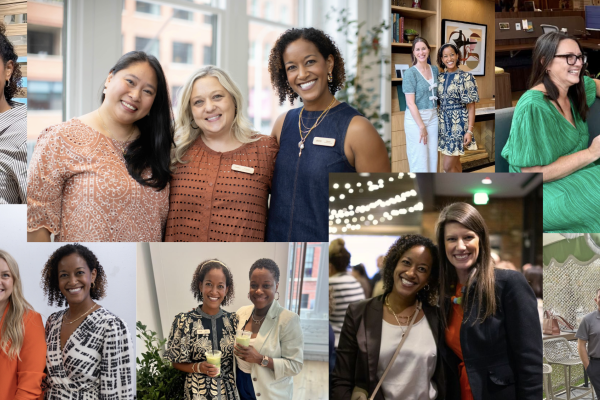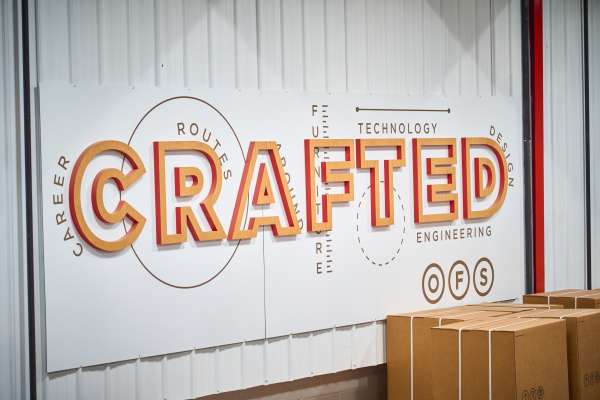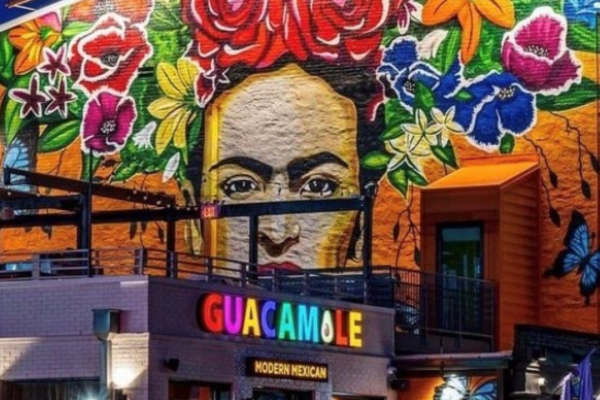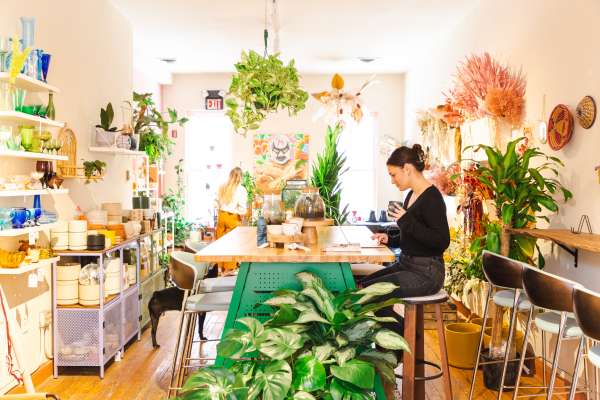Grace and optimism in a world of uncertainty
Amid the growing South Congress (SoCo) district of Austin, TX, Krystal Lucero, RID, IIDA, Senior Interior Designer at Edwards + Mulhausen Interior Design, discusses her journey to becoming a designer and mom, and how she balances her career and family life today.
It's about the people
We’ve all heard the term “glowing personality,” but rarely in life do we meet people who sincerely embody what it means. A few minutes into our conversation with Krystal, it became clear she is one of those rare individuals.
By her mid 30s, Krystal had faced more adversity than some of us encounter in a lifetime—beating cancer, almost losing a child, experiencing sudden hearing loss, and trying to understand her place in racial justice and equality in an industry where women of color are vastly underrepresented.
For many, it’s easy to resort to cynicism as a defense mechanism in moments of vulnerability, but not Krystal.
The challenges Krystal has faced and her strength of character have cultivated a compassionate and accepting attitude toward her work and others. Her empathy and genuine curiosity for people make her a unique force in the interior design industry today.
The things that shape us
Part of learning who we are is making sense of where we came from and the people and places that have shaped us. As Krystal began thinking about her own identity, she wondered, “Why am I a designer? I certainly didn’t see anyone who looked like me growing up in the industry.” While it may not have been obvious at the time, Krystal’s relationship with her father is where her design education first took root.
Her father worked in construction supply sales and had a home office, so Krystal grew up with Sheetrock and samples lying around the house. She often tagged along for claim calls. “I remember my dad would use pink studs on his products so that if they had a claim call, he could easily determine if the product was his—now that’s design,” she shares. “It was fun because I always knew that if I saw those pink studs, it was my dad’s building.”
Krystal’s opportunity to watch her dad in his career naturally exposed her to the work of architects, designers, contractors, and other key players that bring places and ideas to life. She understood early that she, too, could one day be a part of the process.
After high school, Krystal attended Stephen F. Austin State University for interior design, where she met her now-husband, Robert Lucero. Their first encounter was at a basketball game—which comes as no surprise to people who know the couple today. Krystal was refereeing, and Robert was coaching. Their shared love of the sport might have been what brought them together, but it’s their passion for teamwork and collaboration that makes them pillars in their community today.
Passion is a trait Krystal brings into her design career, too. “I always say I can tell when somebody has played a team sport because so many players go into creating a place. I work with contractors, architects, lighting consultants, installers, and furniture dealers,” explains Krystal. “There’s no ‘I’ in team, right? That’s the beauty of the process—when it’s done, and you see the space has come together, you think of all the different people that went into bringing it to life.”
In lieu of 2020’s events, from the COVID-19 pandemic to the social injustices we have seen unfold with people like George Floyd and Breonna Taylor, Krystal began to question the built environment and the ways in which it has been shaped over generations to respond to society. Her curiosity for research turned personal this year as she gained new insight into her own family history. “I discovered my grandfather went to college as a black man in the ’50s, and my mom still remembers watching the news about Martin Luther King Jr.’s death with the entire neighborhood crammed into their living room because they were the only house with a TV. She can even recall times before they had indoor plumbing,” Krystal shares.
In this time when the movement for advancing human rights has never been more critical, Krystal is using her background to make sense of architecture and design’s significance in responding to segregation.
Each design choice that created a discriminatory divide played a role in shaping the American built environment. While we can’t claim that architecture and design created segregation, we can say it enabled it and shaped the behaviors of individuals. Listening to stories like Krystal’s and learning about her family history help us comprehend on a profoundly human level what it might have been like to experience segregation. Though no one can change the past, we all can learn from it. The architecture of racial segregation in its many forms can be used today as a tool for facilitating public education and generating a greater understanding for social tolerance.
Mindfulness and the pursuit of meaning
Krystal is a big picture person, not only in design but in the way she makes sense of the world. As she reflected with us on the events that took place in 2020—from the pandemic to racial justice and equality, we couldn’t help but admire her self-awareness and process for understanding her own place in it all.
Thanks to her optimistic spirit, Krystal found a silver lining. “One of my favorite things that’s come from all of this is a Zoom call I participate in with women of color in our industry from all over the country. We have no sponsorship and no agenda—it’s just dialogue, and it gives us a way to connect and share advice about both work and life.”
When it comes to artists and designers as a whole, Krystal has a love for researching and understanding who they are as people—not just makers. “One of my favorite lines is from a Jay-Z song when he talks about ‘If you want to know the old me, buy my old album,’” she says. “It’s always resonated with me because what he’s really talking about is evolving as a person.” To change implies becoming a different person. To evolve means you are always striving to make adjustments that influence you and your surroundings for the better.
For Krystal, design and perception are closely related. In design, we constantly imagine things that are yet to exist—it’s about perception. In a sense, designers are perfectly equipped to help us all evolve and lead forward a better, more accepting world.
One of Krystal’s greatest hopes is that through advocating for her profession, people will come to understand interior design as a legitimate occupation, “I believe that once people learn you can go to college for interior design and become a licensed designer, that will naturally help with the diversity part,” Krystal says. “So when a little brown girl comes home and tells her parents she wants to be an interior designer, they understand it’s more than what you see on HGTV. Always advocating for what we do will be pivotal in diversifying our industry.”
People like Krystal remind us that when we stop and take the time to actively listen, we find a self-awareness that allows us to understand the world through a bigger lens. For Krystal, design is about being human-centered, solving problems, and always evolving.
Living and integrated life
For many working parents, finding the right balance can be a challenge after starting a family, but it happened naturally for Krystal.
Krystal first learned the art of balance when she was going through cancer treatment while also maintaining full-time employment.
For a long time, people have preached separating work life from home life. But maybe this isn’t the answer at all. For Krystal, finding happiness comes from living a connected life—where family, work, and friends are all integrated.
In a society that encourages multitasking, it’s easy to get caught up in our professional lives. Sometimes, it takes a significant life event, like cancer or a baby, to teach us the most important thing we can do for ourselves and those around us is to be entirely focused on the now. When we choose to be present, we find deeper connections—in our relationships, our careers, and ultimately our lives.


















